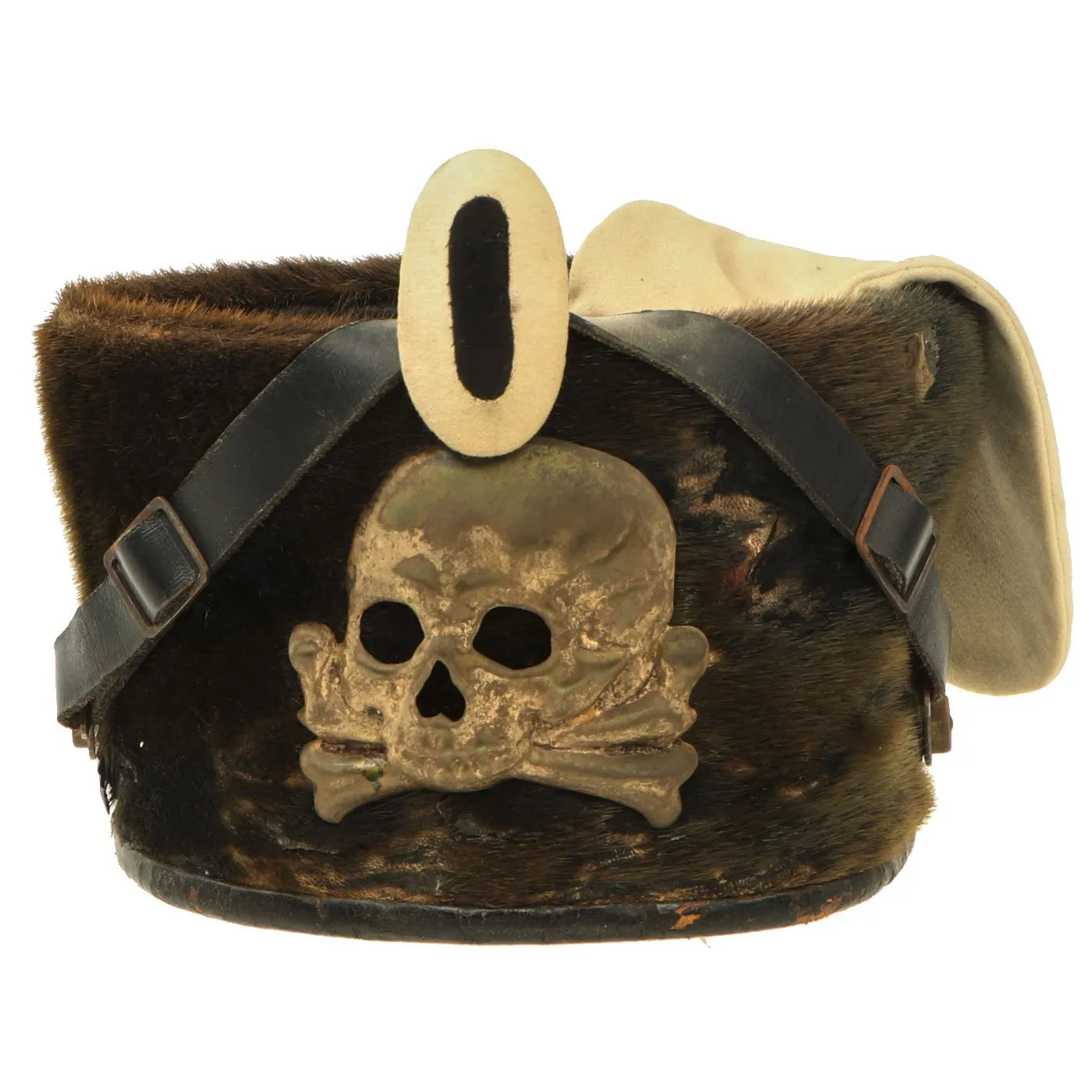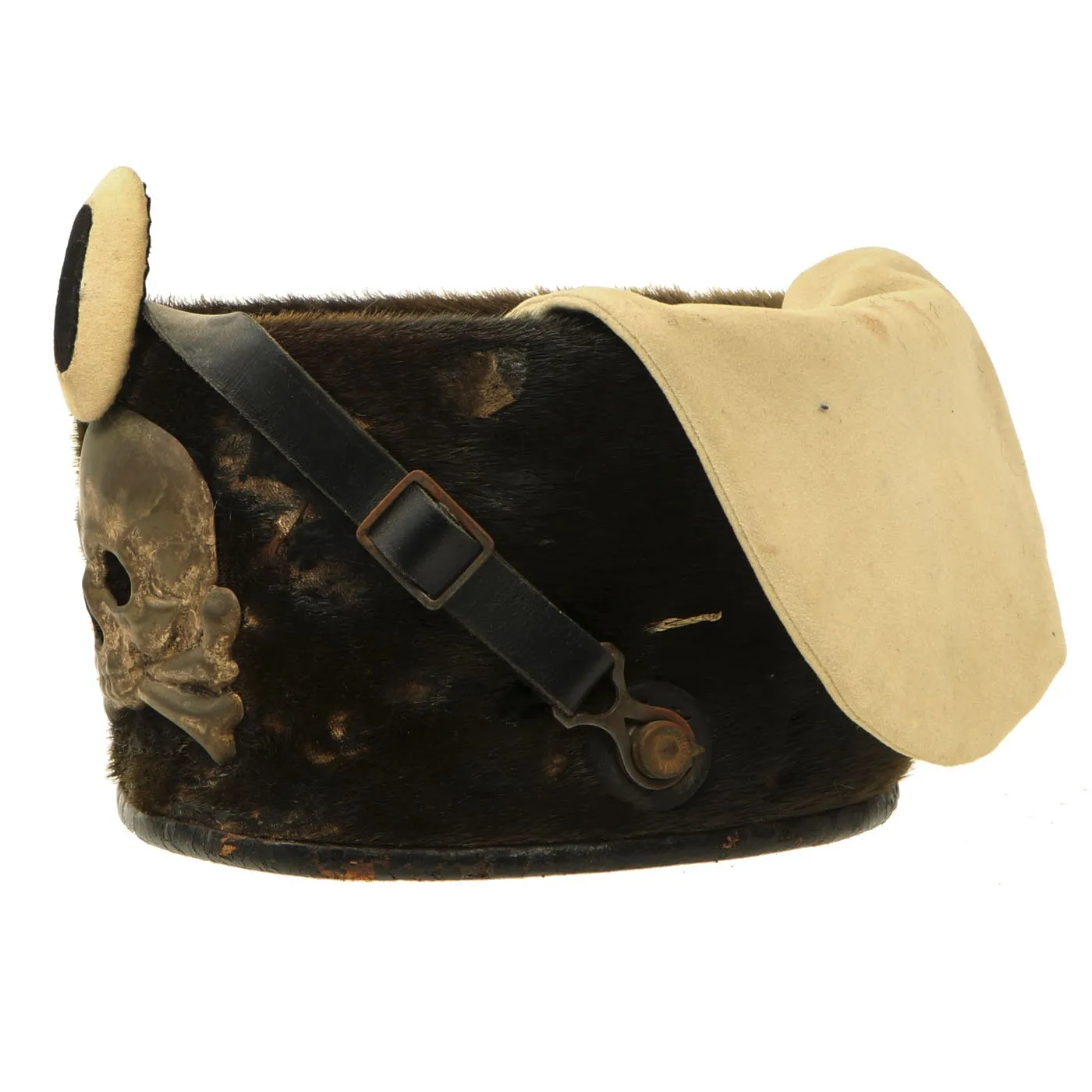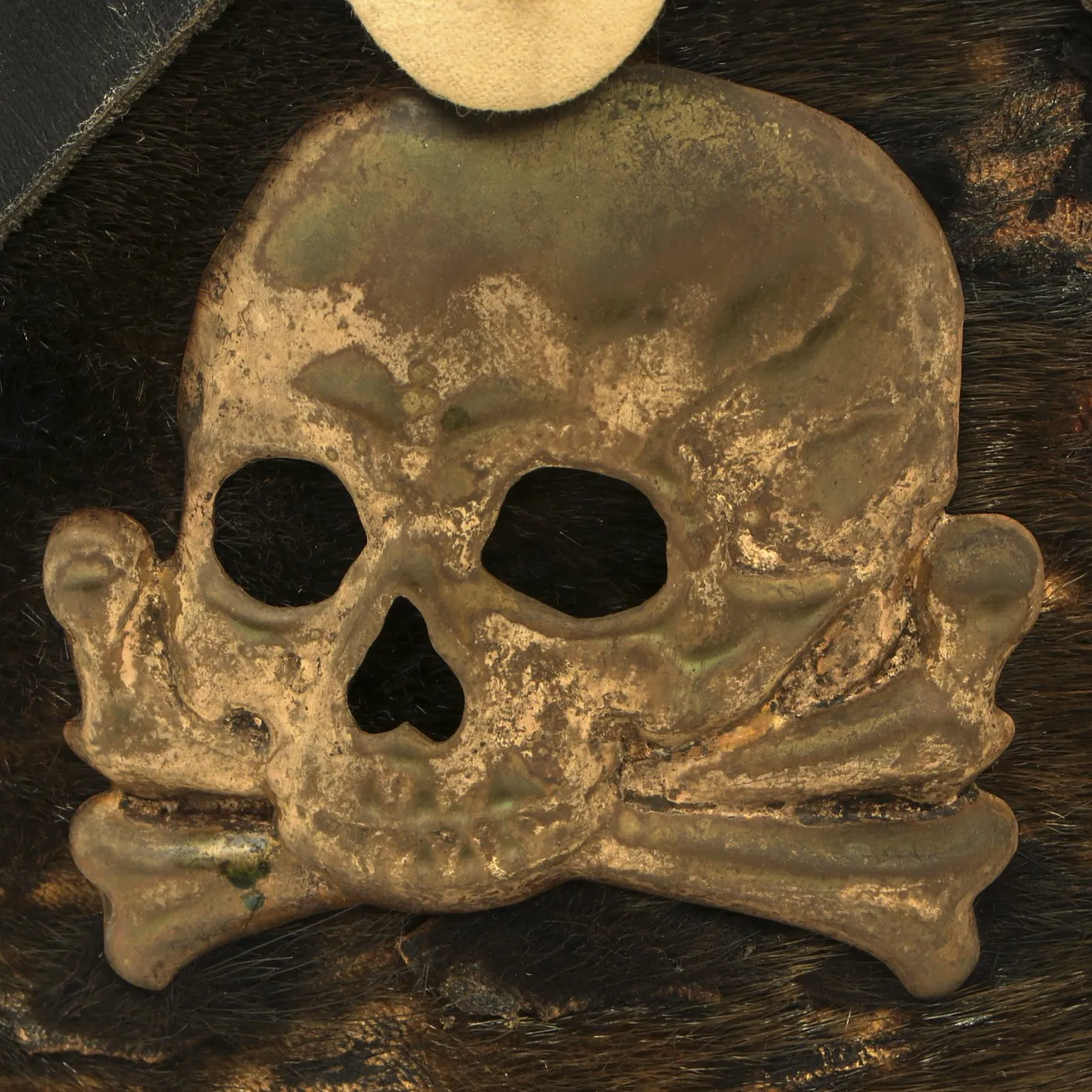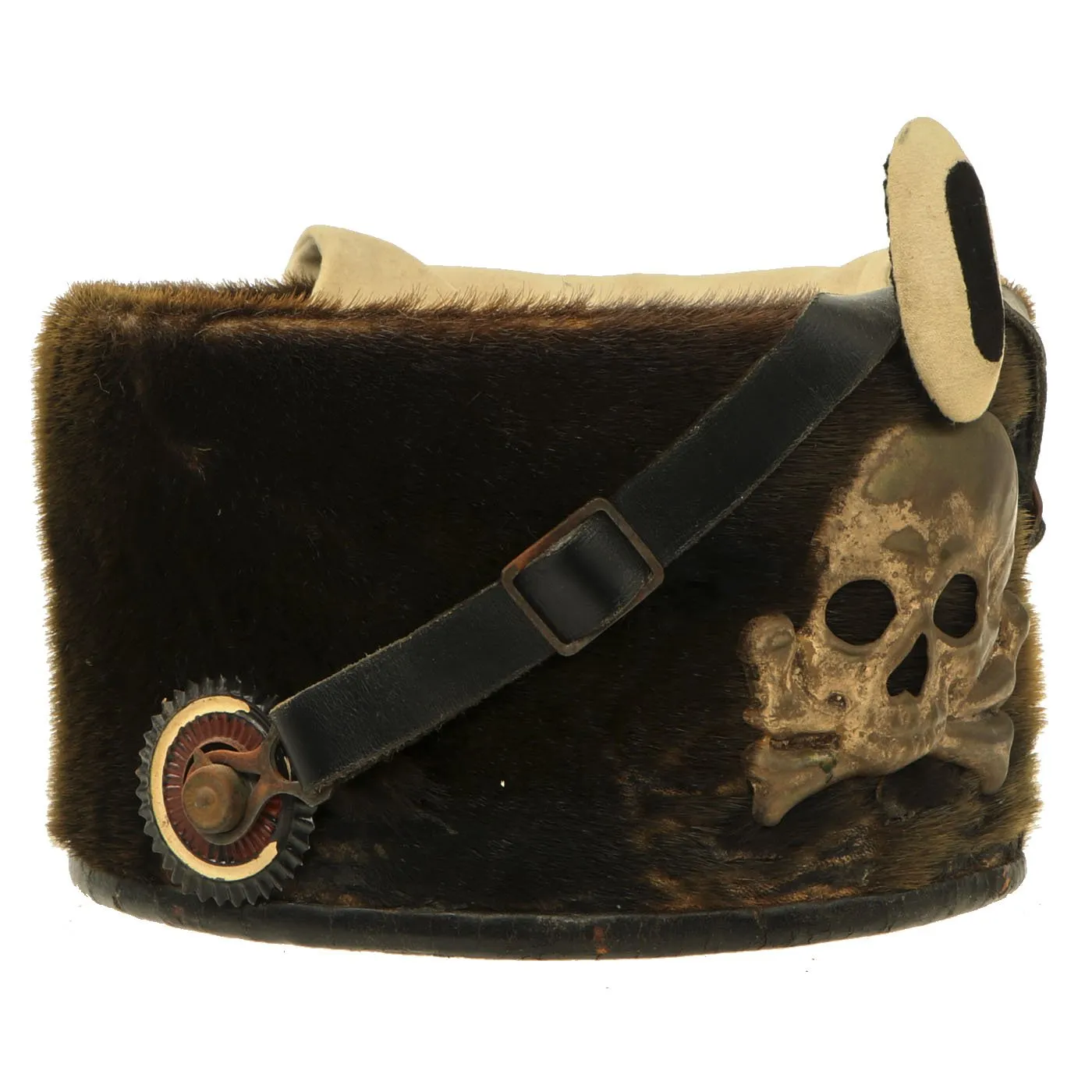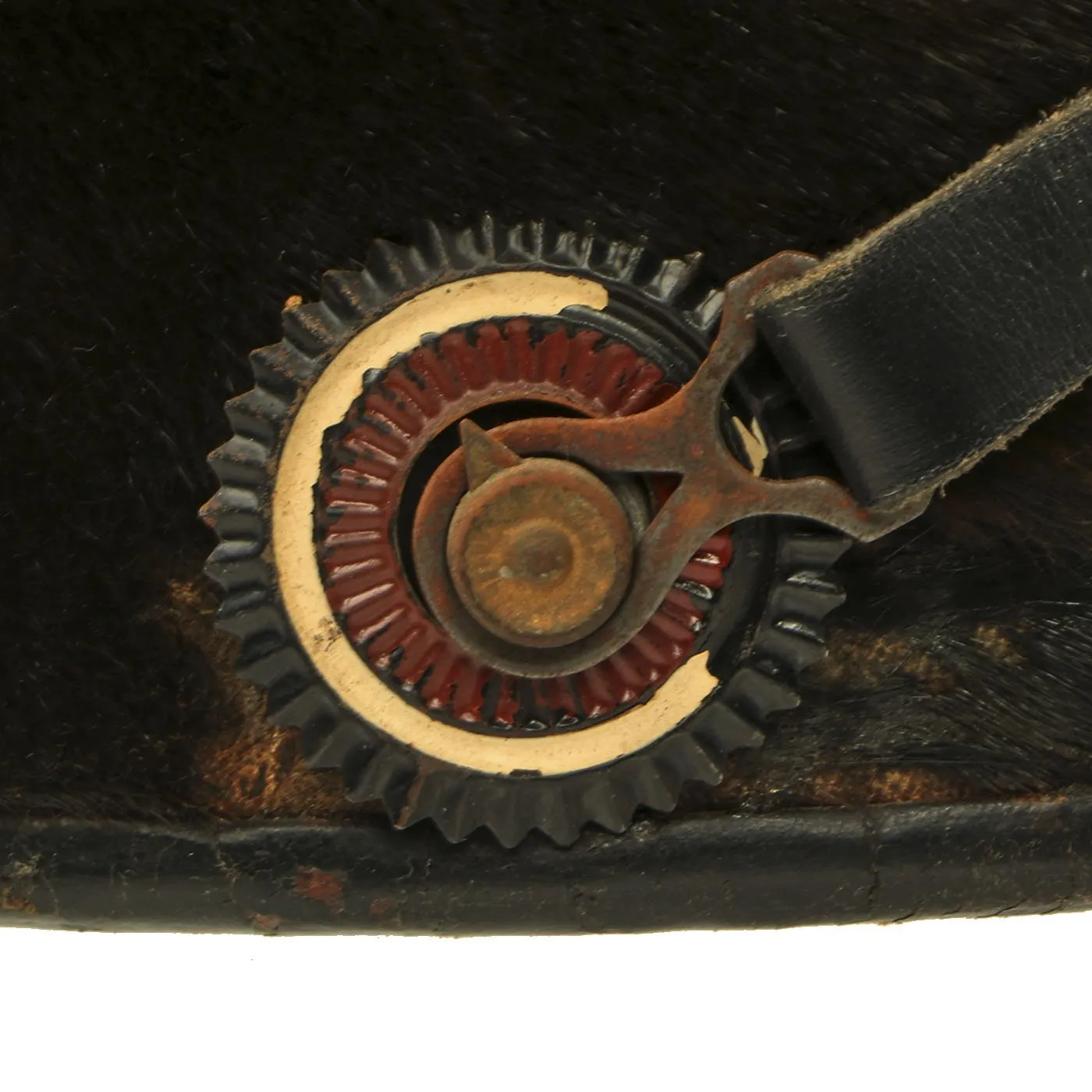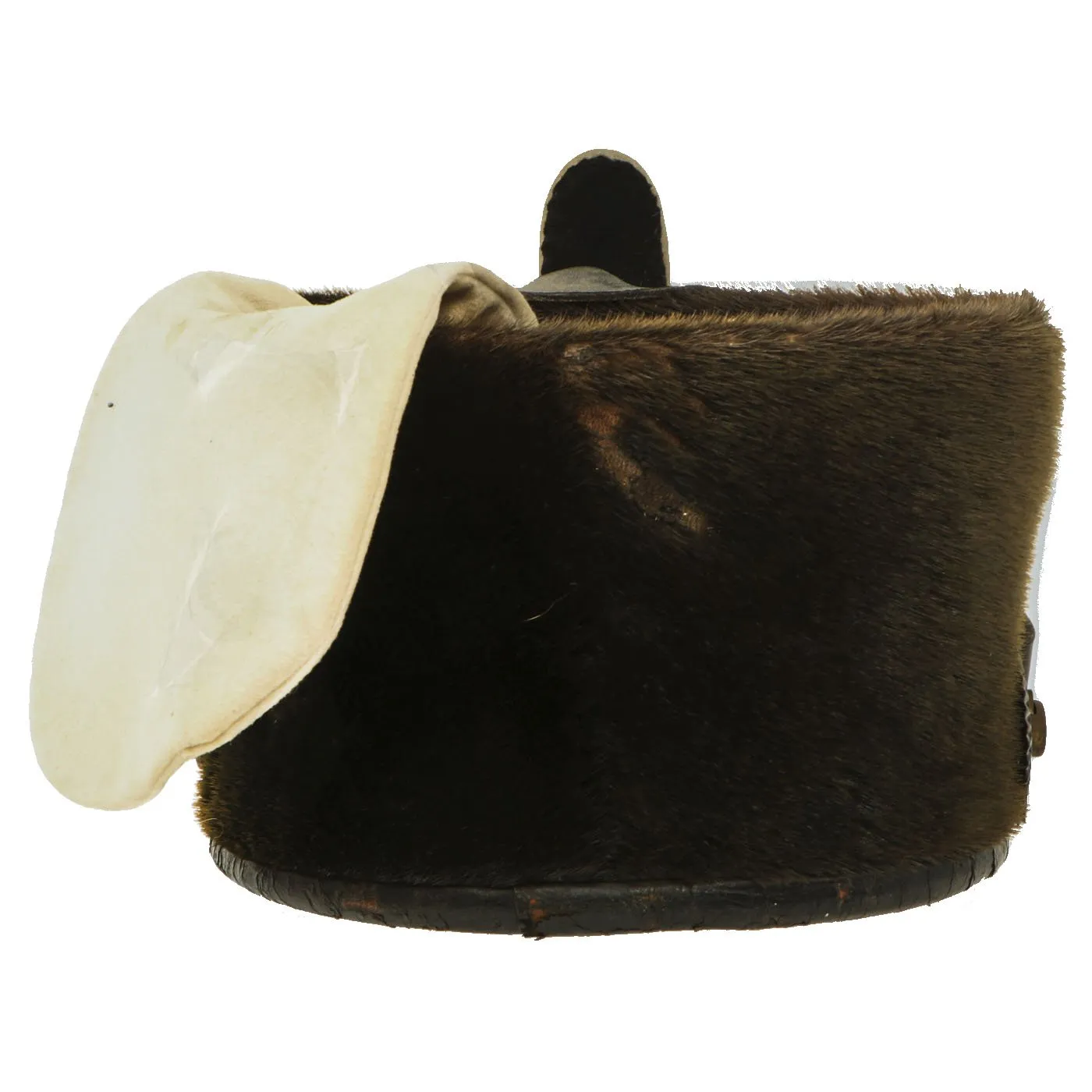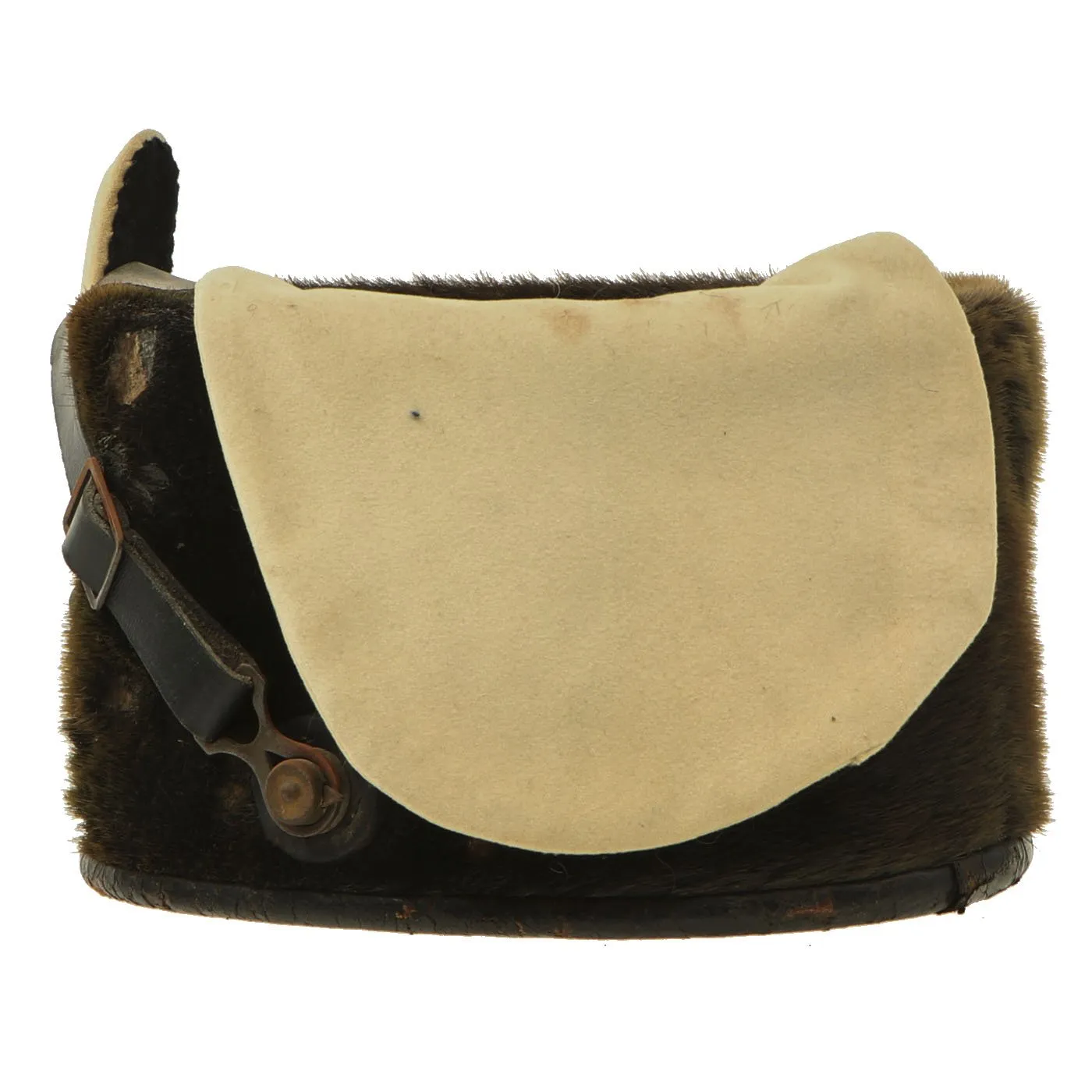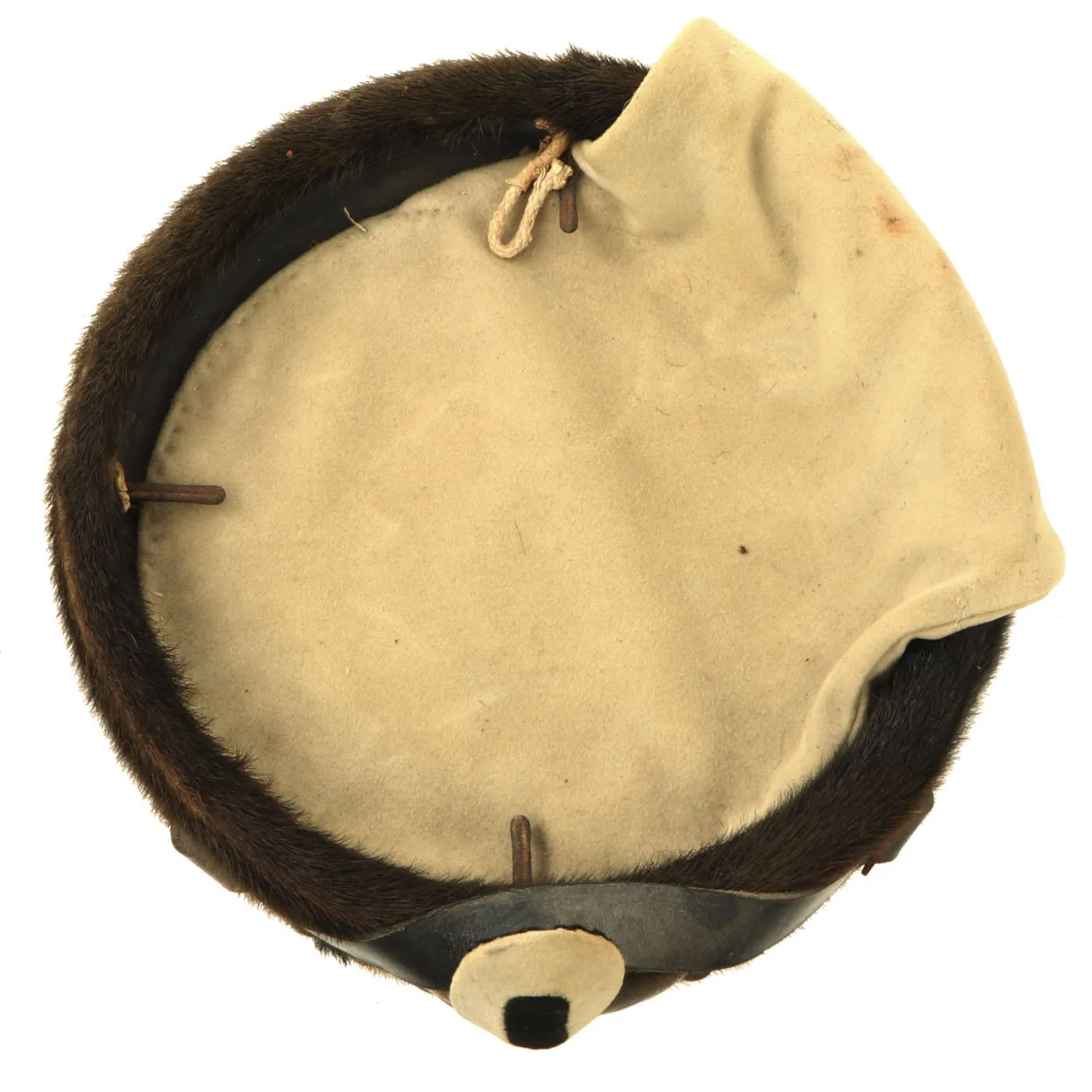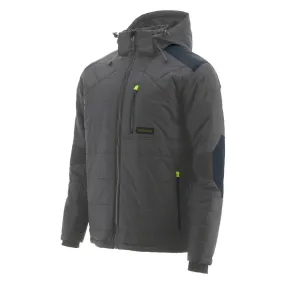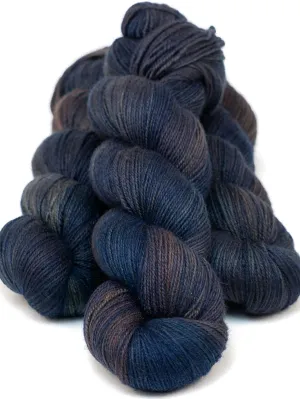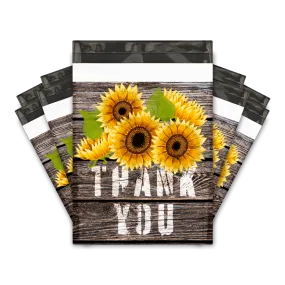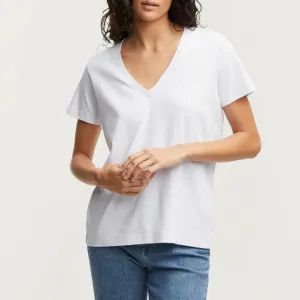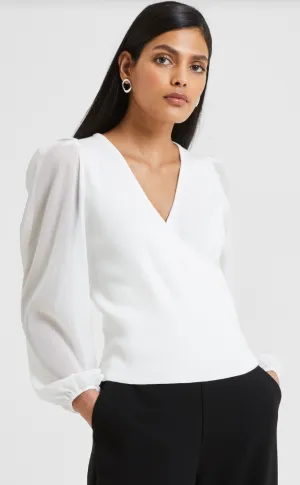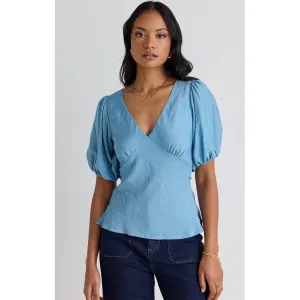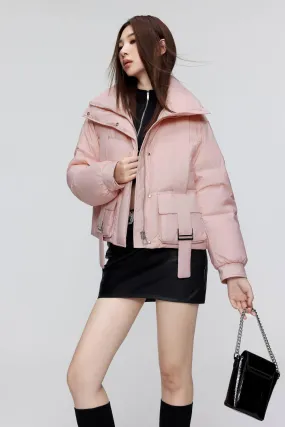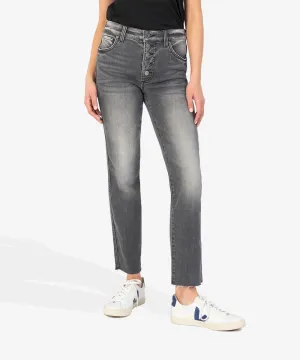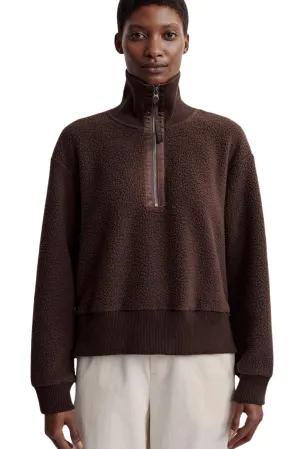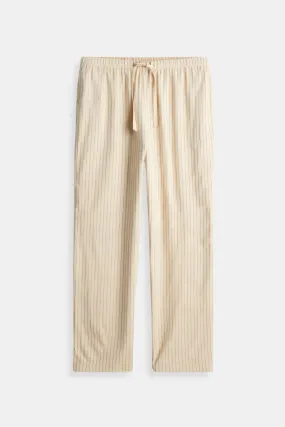Original Item: Only One Available. Here we have a fantastic Imperial German Death's Head 2nd Life Hussars Regimental Busby or Pelzmütze (Fur Cap), intended for EM/NCO's or Mannschaften "Other Ranks" soldiers. Busby is of course the English name for the Hungarian prémes csákó ("fur shako") or kucsma, a military head-dress made of fur, originally worn by Hungarian hussars. In its original Hungarian form the busby was a cylindrical fur cap, having a bag of colored cloth hanging from the top. The end of this bag was attached to the right shoulder as a defense against sabre cuts.
After this the size and design were scaled down, and they became much more for looks than for actual protection. This example is very similar to the British Busby used by Hussars, but is definitely German. The exterior bearskin wrap shows it's 100 year age and the helmet comes with its white slouch bag hanging over the right ear. On the front is a massive Death's Head (Totenkopf) helmet plate in white metal, only used by the Leib Husaren (Life Hussars) regiments. The white bag indicates it is for the 2nd Life Hussars "Queen Victoria of Prussia", first raised in 9 August 1741 along with the 1st Life Hussars.
The busby comes complete with its steel fit leather chinstrap, indicating EM/NCO issue, still attached to the side lugs. The chin strap is in very good shape, though the fittings are oxidized, and it is suspended over the top of the busby.
It is complete with a Prussian (black and white) cockade attached to the center top of the helmet,and German National Colors (red white and black) Kokarden (cockades) around the right side chin strap lug. In 1897 the new Reichs-Kokarde in Red-White-Black was introduced for all ranks to commemorate the 100th anniversary of the birth of Kaiser Wilhelm 1st. The Reichs-Kokarde was to be worn on the right side of headwear, around the chinstrap lug. As the busby and Tschako have the state cockade on the top of the helmet, they did not have to move it from the right to left lug.
Use of the Totenkopf as a military emblem began under Frederick the Great, who formed a regiment of Hussar cavalry in the Prussian army commanded by Colonel von Ruesch, the Husaren-Regiment Nr. 5 (von Ruesch). It adopted a black uniform with a Totenkopf emblazoned on the front of its mirlitons and wore it on the field in the War of Austrian Succession and in the Seven Years' War. The Totenkopf remained a part of the uniform when the regiment was reformed into Leib-Husaren Regiments Nr.1 and Nr.2 in 1808. The skull continued to be used by the Prussian and Brunswick armed forces until 1918, and some of the stormtroopers that led the last German offensives on the Western Front in 1918 used skull badges. Luftstreitkräfte fighter pilots Georg von Hantelmann and Kurt Adolf Monnington are just two of a number of Central Powers military pilots who used the Totenkopf as their personal aircraft insignia.
The interior has a simple leather liner on the interior, which shows light wear, though it is missing the top tie strap. Overall condition is very good, considering the age, though there is definitely significant wear to the fur exterior. The internal bamboo structure is solid, and the helmet does not show any deformation. The three retaining clips on the top for the bag base are still present.
Extraordinary that before 1914 Cavalrymen actually wore these into battle but by 1918 every soldier had been issued with a STEEL HELMET and horses were largely made redundant with the use of Motor Transport. Representing the very last of the "Pomp and Circumstance" of Military uniforms, this still conveys a sense of Romance. Ready to display!




